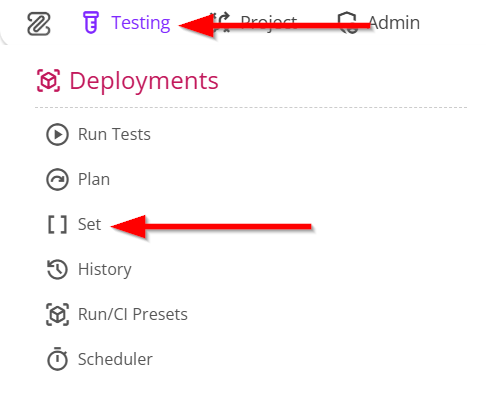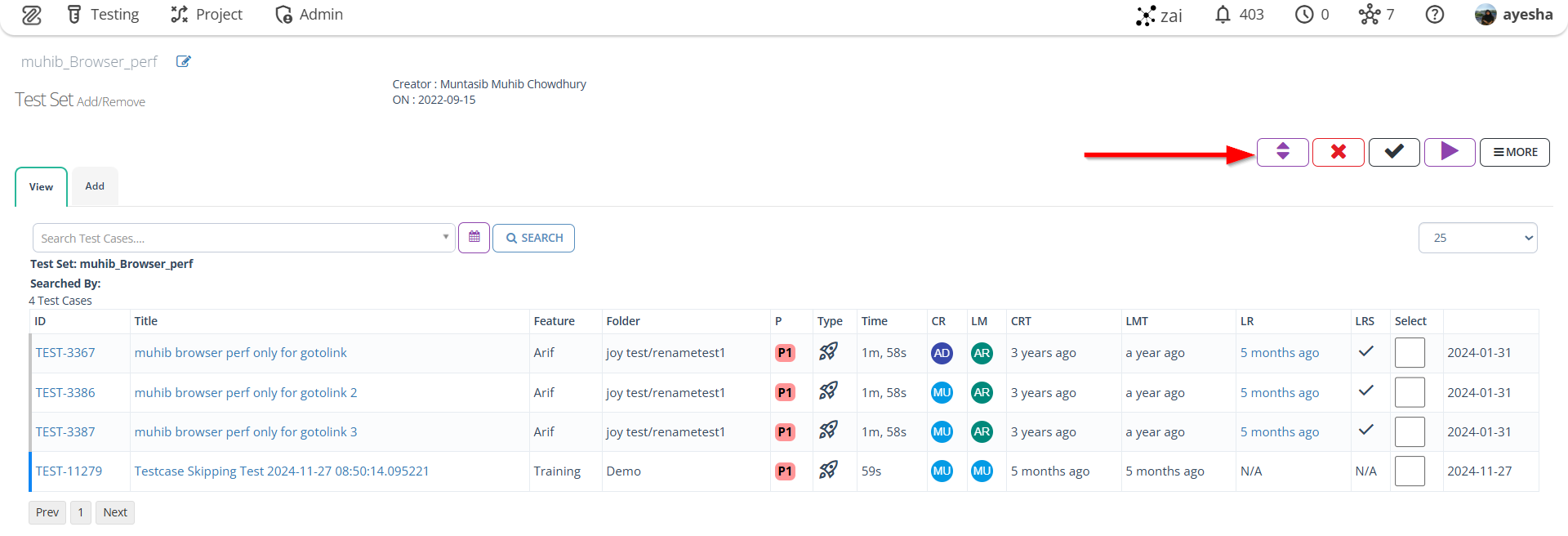Rearrangement of test cases in a Test Set
Description#
What is the meaning of rearranging test cases in a test set?#
Rearranging test cases in a test set refers to the process of reorganizing the order or sequence of test cases within a test suite or test plan. This involves adjusting the placement of test cases based on factors such as execution priority, dependencies, optimization, test coverage, test flow, and maintenance requirements.
The purpose is to improve efficiency, effectiveness, and organization of the testing process and ensure that tests are executed in the most logical and impactful manner.
Why is it necessary to rearrange test cases in a test set?#
Rearranging test cases in a test set is necessary for several reasons:
Execution Priority: Test cases may need to be rearranged to establish the order in which they should be executed, prioritizing critical or high-risk scenarios first for more efficient testing.
Dependencies: Some test cases depend on the successful execution of prerequisite test cases or certain system conditions, requiring rearrangement to ensure dependencies are met.
Optimization: Rearranging test cases allows for optimizing test execution by grouping related or similar test cases together, reducing setup time and maximizing efficiency.
Test Coverage: By strategically organizing test cases, it becomes easier to track and ensure adequate coverage of various functionalities, features, or requirements during testing.
Test Flow: Rearranging test cases can help establish a logical flow, guiding testers through the testing testing process in a more systematic and structured manner.
Maintenance: As testing processess and new test cases are added or existing ones are modified, rearranging test cases helps maintain an organized and up-to-date test set.
Overall, rearranging test cases in a test set enhances test efficiency, effectiveness, and maintanability, leading to better coverage and reliable test results.
Importance of rearranging test cases in a test set#
Rearranging test cases in a set is important for optimizing test execution, managing dependencies, isolating failures, prioritizing critical areas, improving test coverage, and maintaining the test suite.
It improves efficiency by minimizing setup and teardown efforts, ensures proper sequencing of dependent test cases, and aids in troubleshooting by identifying patterns in failures. By prioritizing high-risk areas and intermixing test cases, testers can mitigate risks and achieve better coverage. Regularly reviewing and rearranging test cases helps keep the test suite up-to-date and relevant.
Overall, rearranging test cases enhances the effectiveness and efficiency of software testing processes.
Steps#
- From the Menu bar, go to Testing and then select the Set option.

- Go to the Test Set page.
- Click on the specific Test Set to rearrange its test cases.

- Click on the Edit Test Case Order button.
The Edit Test Case Order button allows users to rearrange the sequence of test cases within a test set.

Go to the Test Set Reorder page.
Drag and drop the required Test Case in a required position.
Dragging and dropping the required Test Cases in a specific position is necessary to precisely organize and control the execution order of test cases within a test set, ensuring a customized and targeted testing approach.

- Click on the SAVE button.
